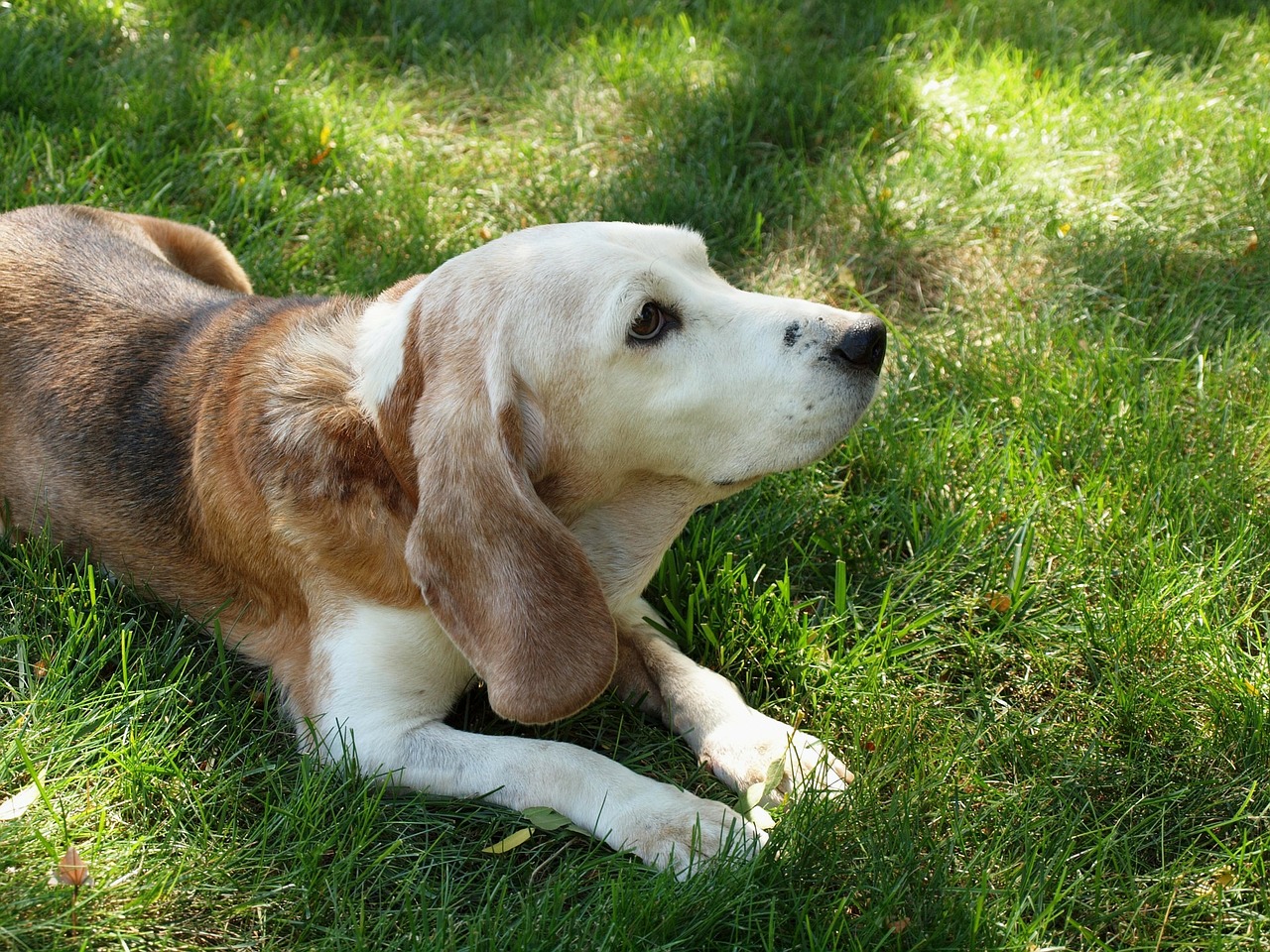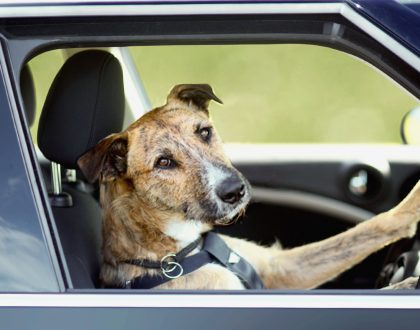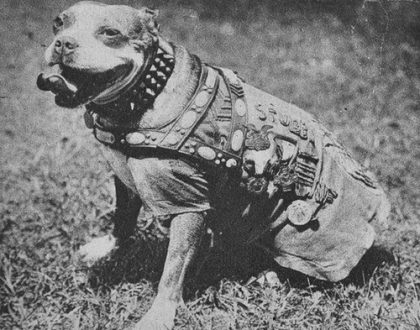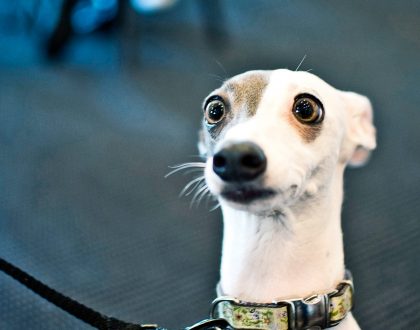Senior Dog Behavior: What to Expect

Senior Dogs: Common Behavior Changes
Puppies have their behavior problems and older dogs have theirs. For older dogs, in many cases it is not that they do not understand the ‘rules,’ but that they may, for many reasons, be unable to follow them.
SEPARATION ANXIETY
Separation anxiety is one of the most common behavior problems seen in older dogs. A dog who has separation anxiety will become very anxious when he senses his owner is about to leave. When the owner does leave, the dog often becomes destructive, barks or howls, may urinate or defecate, and may salivate profusely. A dog with separation anxiety will often be overly exuberant when his owner returns.
Older dogs may have a decreased ability to cope with changes in routine. Vision or hearing loss may make them more anxious, overall, but especially when they are separated from the owner. Neurologic changes may also limit an older dog’s ability to adjust to change.
Some of the main considerations in treating separation anxiety are:
- Do not make a big deal about leaving or coming home – that simply reinforces the behavior.
- Teach your dog to relax. If your dog can learn to relax in a ‘stay’ for extended periods while you are there, he will be more likely to learn how to relax while you are gone.
- Change your departure cues. Many dogs know as soon as the alarm goes off, that it is a work day and you are going to leave. They start getting anxious as soon as they hear the alarm. We need to change our routine so the dog does not know we will be leaving. For instance, pick up the car keys and then go sit on the couch; on a Saturday, get up and dress like you are going to work, but stay home.
- Start with very short departures. Determine how long you can leave your dog before he gets anxious. It may be only 10 seconds, so start there. Leave for 5 seconds, return, and if the dog has remained calm, reward him. Gradually increase the time you are gone, always returning before the dog becomes anxious, and rewarding him for staying calm. This may take weeks to months, so patience is the key.
- Associate your departure with something good. As you leave, give your dog a hollow toy such as a ‘Kong’ filled with a wonderful treat. This may take his mind off of you leaving. Anxiety tends to feed on itself, so if we can prevent the anxiety from occurring when you leave, the dog may remain calm after you leave. Make sure your dog’s environment is comfortable: the right temperature, a soft bed, sunlight, ‘easy-listening’ music. Some dogs will be more relaxed if they can see the outside world, others may become more anxious. Similarly, some older dogs are more anxious when left outdoors, and do much better when they can stay in the house. Determine what is best for your dog.
- Break up the dog’s day. If you are gone for extended periods during the day, you may want to think about having someone come in during the day to let your dog out and give him some exercise. Older dogs, especially, may need to go outside more often to urinate and defecate. Giving them this opportunity may decrease their anxiety.
- Crate your dog. Many dogs feel safe in a crate, and being in a crate will help reduce their destructiveness. This will make it safer for them and your house.
- Use a team approach. Anti-anxiety medications such as Clomicalm may break the cycle of separation anxiety. Medication alone, however, will not solve the problem. Work with your veterinarian and an animal behaviorist to develop a plan that will work best for you and your dog.
AGGRESSION
Older dogs may become aggressive for several reasons. Aggression may be the result of a medical problem such as one causing pain (arthritis or dental disease), vision or hearing loss, which results in the dog being easily startled, lack of mobility so the dog can not remove himself from the irritating stimulus (e.g.; an obnoxious puppy), or diseases having direct effects on the nervous system, such as cognitive dysfunction (see below). Stresses such as moving, a new family member, or a new pet may make an older dog more irritable and more likely to be aggressive. In a multi-dog household, an older dog who was the ‘dominant’ dog in the past, may find his authority being challenged by younger dogs in the household.
By determining what factors may be contributing to the aggression, we may be able to eliminate or reduce those factors. Treating medical conditions which contribute to the aggression is paramount. Watch the dog for signs of stress (increased panting), and remove the dog from the stressful situation which could cause aggression. Using a ‘halti’ headcollar and leash may provide more control over an older dog, especially one who has decreased hearing or vision. Medications can be helpful in reducing aggression that may be due to fear and anxiety, but as with separation anxiety discussed above, medication alone will not solve the problem. Work with your veterinarian and an animal behaviorist to develop a plan that will work best for you and your dog.
HOUSE SOILING
Some older dogs who have been housetrained for years, may start having ‘accidents.’ As with other behavior problems in older dogs, there may be multiple causes for this change in behavior. Medical conditions which result in an increased frequency of urination or defecation may be the underlying cause for this behavior problem. These conditions include: colitis, inflammatory bowel disease, diabetes mellitus, bladder stones or infections, inflammation of the prostate, Cushing’s disease, and kidney or liver disease. Medical conditions which cause pain or make it difficult for the dog to go outside to eliminate can also contribute to the problem. These conditions include arthritis, anal sac disease, loss of vision, and some forms of colitis. Treatment of these medical conditions may help to resolve this behavioral problem. Some medical conditions can result in a loss of control over bladder and bowel function and include hormone responsive incontinence, prostatic disease, and cognitive dysfunction. As discussed earlier, separation anxiety may result in defecating and urinating when the dog is separated from his owner(s).
Any older dog with a house soiling problem should be examined by a veterinarian and the owner should be able to give a detailed history of the color and amount of urine (or stool) passed, the frequency at which the dog needs to eliminate, changes in eating or drinking habits, the dog’s posture while eliminating, and whether the accidents only occur when the owner is gone.
Medical conditions contributing to the house soiling problem should be treated appropriately. If arthritis or painful movement is involved, an owner may want to build a ramp to the outside so the dog does not need to maneuver on stairs. Slick floor surfaces should be covered with non-slip area rugs or other material. Areas in the house where the dog has urinated or defecated should be cleaned with an enzyme cleaner. For dogs who need to urinate or defecate frequently, owners may need to change their schedules or find a pet sitter who can take the dog outside at appropriate intervals. A dog’s food may contribute to difficulty defecating, and attempts should be made to determine if this could be a reason for the house soiling. Other medical conditions such as diabetes mellitus, bladder stones, or hormonal incontinence should be treated accordingly.
NOISE PHOBIAS
Some older dogs become overly sensitive to noise. One may think the reverse would happen since many older dogs will acquire some hearing loss. Cognitive dysfunction, immobility resulting in an inability of the dog to remove himself from the source of the noise, and the decreased ability of an older dog to manage stress may be factors contributing to noise phobia.
It is important to identify which noises the dog may be afraid of. It may be noises we can hear, such as thunderstorms, but remember that a dog can hear frequencies humans cannot; the dog may be fearful of a sound we cannot hear. For this reason, also try to relate the dog’s behavior with other occurrences in the environment (e.g.; a train whistle, which may produce some high frequency sounds).
Treatment of noise phobias can include medication, desensitization and counterconditioning. For instance, if the sound is identified, play a recording of the sound at a very low volume level and reward the dog if no fear is displayed. Gradually (over days to weeks) the volume can be increased and rewards given appropriately.
INCREASED VOCALIZATION
Stress in an older dog may translate itself into increased barking, whining, or howling. This can occur during separation anxiety, as a means to gain attention (if the dog cannot come to you because of decreased mobility, he may be asking you to come to him), or because of cognitive dysfunction.
The cause of the increased vocalization should be identified, if possible. If the dog is vocalizing in order to receive attention, he should be ignored. It may also be helpful to use ‘remote correction,’ such as throwing a pop can containing a few coins or pebbles toward the dog (not at the dog), which may startle him and stop him from vocalizing. He should not associate you with the correction or he may increase his vocalization just to get your attention. If the increased vocalization is an attention-seeking behavior, review the amount and type of attention you are giving the dog. Maybe you need to set aside some time for you and your dog (on your terms).
This article reprinted and modified from: http://www.pawfriendly.com/community/senior-dog-behavior-changes
Image from: Public Domain Images
Recommended Posts

Take me for a ride! How to Keep Your Dog (and YOU) Safe in the Car
September 18, 2019

Sergeant Stubby
August 22, 2019


